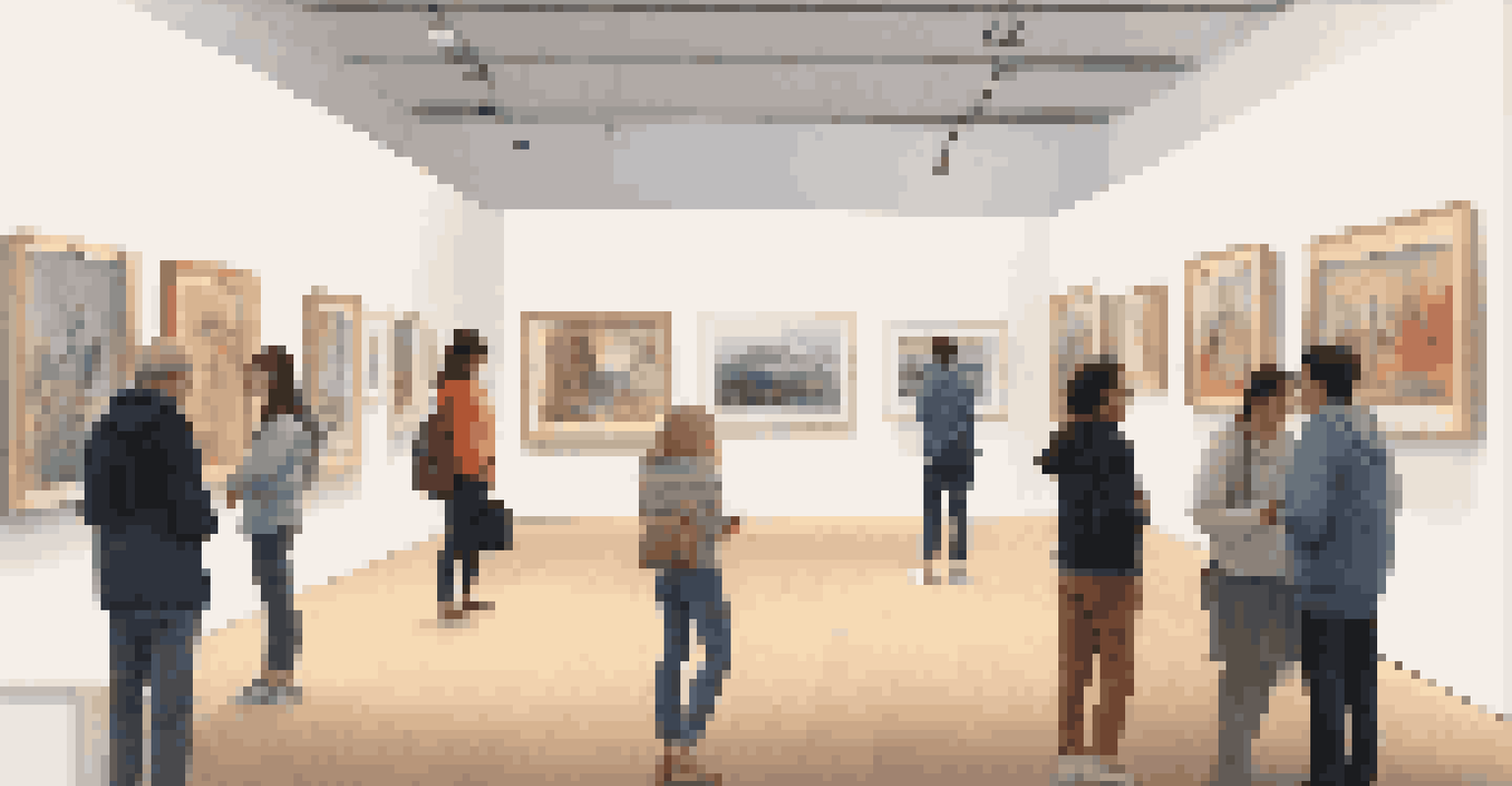Augmented Reality in Event Planning: Engaging Experiences

Understanding Augmented Reality in Events
Augmented Reality (AR) is a technology that overlays digital information onto the real world, enhancing our experiences. In event planning, AR creates interactive environments that captivate attendees' attention. Imagine walking into a conference where digital elements bring presentations to life or where guests can interact with virtual displays.
Augmented reality is a technology that makes the digital world an integral part of our everyday life, allowing us to interact with our surroundings in a more engaging way.
This technology is not just about flashy visuals; it’s about creating memorable experiences that engage participants on multiple levels. For instance, at trade shows, AR can allow visitors to explore products in a 3D format, making the interaction more tangible. It blurs the line between the physical and digital worlds, offering a unique way to connect with audiences.
By incorporating AR, event planners can elevate traditional gatherings into immersive experiences. This shift not only enhances engagement but also encourages deeper connections between attendees and the event's content. As the world becomes increasingly digital, understanding AR’s role in events is essential for staying relevant.
Enhancing Guest Engagement with AR
One of the most significant benefits of using AR in events is its ability to enhance guest engagement. For instance, interactive AR experiences can turn a simple booth into a captivating adventure, encouraging attendees to spend more time exploring. This engagement can lead to better retention of information and a more enjoyable experience overall.

Imagine an event where guests can use their smartphones to unlock additional content related to speakers or presentations simply by pointing their devices at a QR code. This not only provides attendees with valuable insights but also makes the experience more interactive and fun. Such engagement strategies can turn passive observers into active participants.
AR Enhances Event Engagement
Augmented Reality transforms events into interactive experiences, deepening attendee engagement and retention.
Moreover, AR can help collectors and enthusiasts display their items in a more appealing way. For example, at an art exhibition, visitors can use AR to see the story behind each piece, creating a deeper connection to the artwork. This level of engagement fosters a memorable experience that keeps attendees talking long after the event ends.
Creating Unique Brand Experiences with AR
AR offers brands a unique platform to create unforgettable experiences at events. By integrating AR elements into their displays, brands can showcase their products in innovative ways. For instance, a car manufacturer might use AR to allow customers to visualize different models and features without the need for physical prototypes.
The future of augmented reality is not about technology, but about creating meaningful experiences that enhance our understanding of the world.
This transformation of brand interaction not only captures attention but also fosters a sense of innovation. When attendees engage with a brand through AR, they are more likely to remember the experience and, subsequently, the brand itself. By creating these unique interactions, brands can differentiate themselves in a crowded marketplace.
Furthermore, leveraging AR for brand storytelling can deepen emotional connections. When guests can visualize a brand's journey or mission through AR, it humanizes the brand and adds layers to its narrative. This impactful storytelling can lead to increased loyalty and advocacy among attendees.
Streamlining Event Logistics with AR
In addition to enhancing guest experiences, AR can be a game-changer for event logistics and management. For instance, event planners can use AR to create interactive maps that help attendees navigate large venues seamlessly. This reduces confusion and enhances the overall flow of the event.
Moreover, AR can assist in staff training by simulating event scenarios, allowing team members to practice their roles before the actual event. This preparation ensures that everyone is on the same page, leading to a smoother execution. With AR, planners can anticipate issues and address them proactively.
Unique Brand Experiences with AR
By integrating AR into displays, brands can create memorable interactions that foster emotional connections with attendees.
Additionally, AR can facilitate real-time updates, providing attendees with information about schedule changes or upcoming sessions. This level of communication is crucial for maintaining engagement and ensuring that guests have access to the latest event details. By streamlining logistics, AR enhances the overall experience for both planners and attendees.
Measuring Success with AR Analytics
One of the most significant advantages of incorporating AR in events is the ability to measure engagement effectively. AR platforms often come with analytics tools that track user interactions, providing valuable data insights. This information helps event planners understand what aspects resonated most with attendees, guiding future improvements.
For instance, by analyzing which AR features attracted the most engagement, planners can refine their strategies for future events. This data-driven approach not only enhances attendee experiences but also maximizes return on investment for the event. Understanding how guests interact with AR elements can shape better experiences down the line.
Moreover, these insights can help justify the use of AR technology to stakeholders by illustrating its impact on engagement and satisfaction. By presenting concrete data, event planners can demonstrate the value of innovative technologies in enhancing event experiences, paving the way for even more exciting advancements in the future.
Challenges and Considerations for AR in Events
While the benefits of AR in event planning are substantial, there are also challenges to consider. One major hurdle is the technological barrier; not all attendees may be familiar or comfortable with using AR applications. Ensuring that the technology is user-friendly and accessible is essential for maximizing engagement.
Additionally, the cost of implementing AR can be a concern for some event planners. Developing high-quality AR experiences requires investment, and not all budgets can accommodate this. However, businesses can explore various levels of AR integration, from simple applications to more complex experiences, depending on their resources.
AR Streamlines Event Logistics
Augmented Reality helps event planners manage logistics more efficiently, improving navigation and communication during events.
Lastly, ensuring a stable internet connection is crucial for AR functionalities to work seamlessly during events. Planners must consider this aspect, especially in large venues or outdoor settings where connectivity can be inconsistent. By addressing these challenges upfront, planners can create a smoother AR experience for all attendees.
The Future of AR in Event Planning
The future of AR in event planning looks promising as technology continues to evolve. As AR tools become more sophisticated and affordable, we can expect to see even more creative applications at events. This innovation will likely push the boundaries of what’s possible in terms of guest interaction and engagement.
For example, advancements in AR could lead to fully immersive environments where attendees participate in virtual reality experiences alongside augmented reality elements. This merging of technologies can create a truly transformative experience for guests, setting a new standard for events. The possibilities are limitless.

As event planners embrace these advancements, they will need to stay informed about emerging trends and technologies. By being proactive and adaptable, planners can harness the full potential of AR, ensuring their events remain engaging and relevant in a rapidly changing landscape. The integration of AR is more than just a trend; it's the future of event planning.